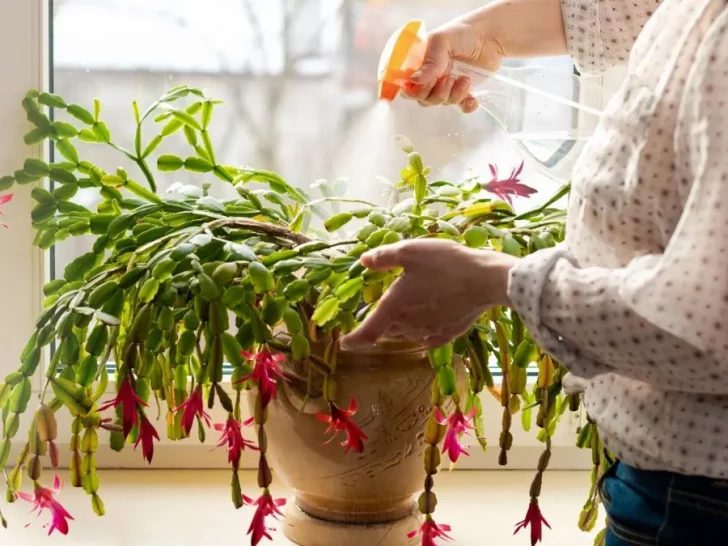The Christmas Cactus, Schlumbergera bridgesii, is a popular houseplant known for its vibrant blooms during the holiday season.
Unlike typical desert cacti, the Christmas Cactus originates from the tropical rainforests of Brazil, making its care unique compared to its desert relatives.
General Care and Watering Needs
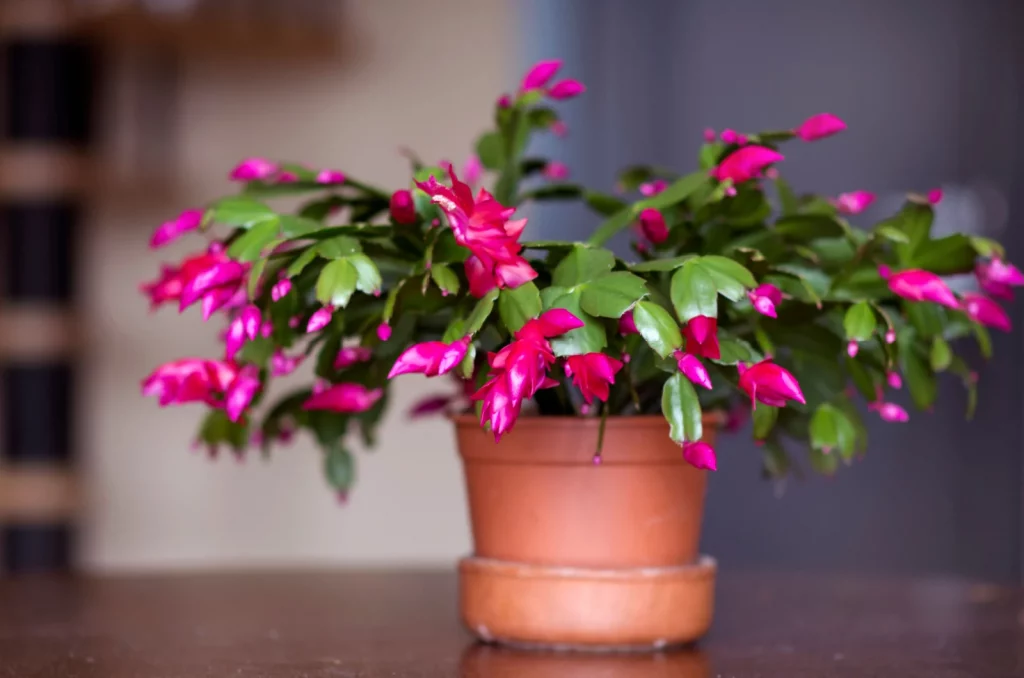
Proper care and watering are essential for maintaining healthy and vibrant plants.
The specific needs can vary widely depending on the type of plant, but some general guidelines can be followed.
Light Requirements
Christmas Cacti thrive in bright, indirect light. Direct sunlight can damage the leaves, causing them to burn and stunt growth.
Ideal locations include well-lit rooms away from direct sun exposure.
If natural light is insufficient, especially in fall and winter, consider using a grow light to supplement.
Humidity
Being native to humid rainforests, Christmas Cacti prefer moderate to high humidity levels. Aim for 50-60% humidity.
This can be achieved by placing a tray of water nearby or using a humidity tray with gravel and water underneath the plant pot.
As water evaporates, it creates a humid microenvironment beneficial for the cactus.
Soil Requirements
Christmas Cacti require well-draining soil to prevent root rot.
A suitable mix can be purchased or homemade using three parts potting soil to one part sand, or one part potting soil, one part perlite, and two parts compost.
Ensuring the soil drains well is crucial for the plant’s health.
Fertilization
Fertilize the Christmas Cactus with a balanced houseplant fertilizer (NPK 6-18-6) every 2-3 weeks during its growing season, typically from spring to early fall.
Stop fertilizing once flower buds appear to encourage blooming.
Over-fertilization can lead to nutrient buildup and damage the plant.
Watering Techniques
To water correctly, use room temperature water and pour it evenly over the soil until water drains from the bottom.
Ensure the pot has drainage holes to prevent water from sitting at the bottom, which can lead to root rot. Avoid leaving the plant in standing water.

How Often to Water
Watering a Christmas Cactus is a delicate balance. Unlike desert cacti, it cannot tolerate prolonged dryness.
Water the plant when the top inch of soil feels dry to the touch. Insert your finger into the soil to check its moisture level.
During the flowering period, slightly increase watering frequency to support bloom development.
Signs of Proper Watering
A well-watered Christmas Cactus will have plump, healthy leaves. If the leaves start to wrinkle or shrink, it indicates underwatering.
Conversely, if the leaves become soft and translucent, it may be overwatered. Adjust watering practices based on these signs.
Deep Watering Technique
To ensure the roots receive adequate moisture, consider the deep watering technique.
Water the plant thoroughly until water runs out of the drainage holes, ensuring the entire root system is hydrated.
Allow the soil to dry out slightly before the next watering session. This method helps in preventing shallow root development and encourages healthier root growth.
Seasonal Adjustments
Adjust your watering schedule according to the season. During the active growing season (spring to early fall), water more frequently.
In contrast, reduce watering during the plant’s dormancy period (late fall to winter) to prevent overwatering.
Keep the soil slightly moist but not wet during the dormant phase.
Common Mistakes and How to Avoid Them
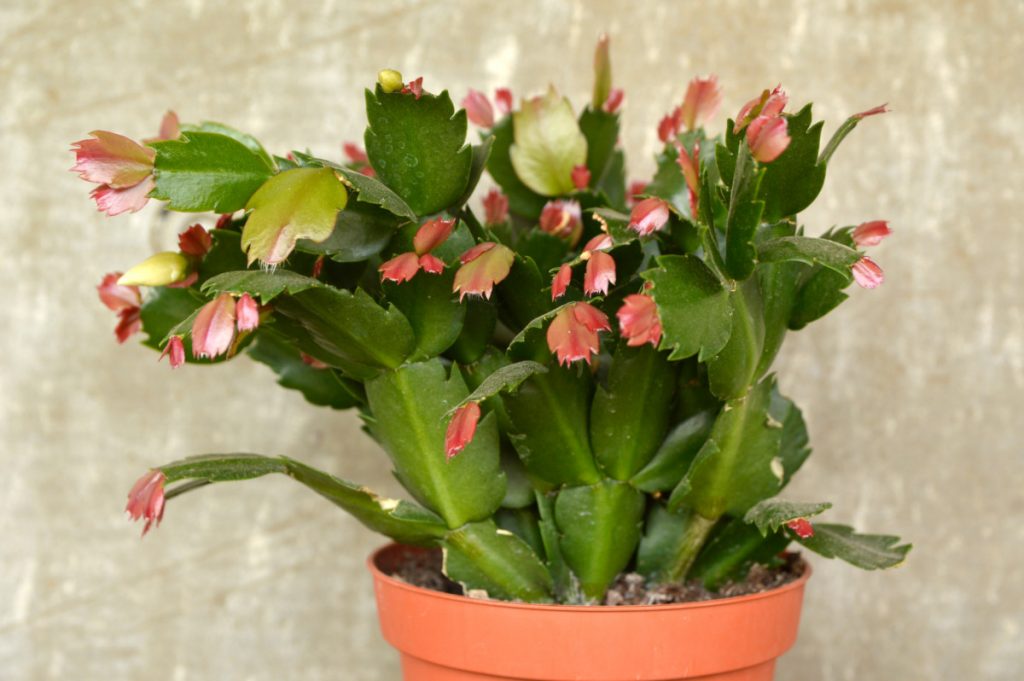
Overwatering
One of the most common mistakes is overwatering. Ensure the soil dries out between watering sessions.
Use pots with drainage holes and well-draining soil to prevent waterlogging.
Overwatered plants often show signs of root rot, such as yellowing leaves and mushy stems.
It’s important to remove any excess water from the saucer beneath the pot to prevent the roots from sitting in water.
Identifying Overwatered Christmas Cactus: Look for signs like wilting despite moist soil, yellowing leaves, and a musty smell from the soil.
If overwatering is suspected, reduce watering frequency and allow the soil to dry out more between watering’s.
Preventing Overwatering: Always use a pot with good drainage and avoid leaving the plant in standing water.
Ensure the soil dries out slightly between watering’s, especially during the plant’s dormant period.
Underwatering
Underwatering can cause the cactus to become dehydrated, evident through shriveled leaves.
Regularly check the soil moisture and water when necessary.
Maintaining consistent watering practices helps prevent the plant from becoming too dry.
Dehydration stress can also lead to reduced blooming and slower growth.
Identifying Underwatered Christmas Cactus: Wrinkled, shriveled leaves and dry, pulling away from the pot’s edges.
Underwatered plants may also have brittle leaves and stunted growth.
Preventing Underwatering: Regularly check soil moisture and adjust watering frequency based on the plant’s needs.
Ensure a thorough watering routine during the active growing season, and slightly reduce the frequency during dormancy.
Environmental Changes
Sudden changes in light, temperature, or humidity can cause the Christmas Cactus to drop its buds or flowers.
To avoid this, keep the plant in a stable environment and gradually acclimate it to any changes.
For example, when transitioning from outdoors to indoors, do so gradually over a week or two.
Encouraging Blooms
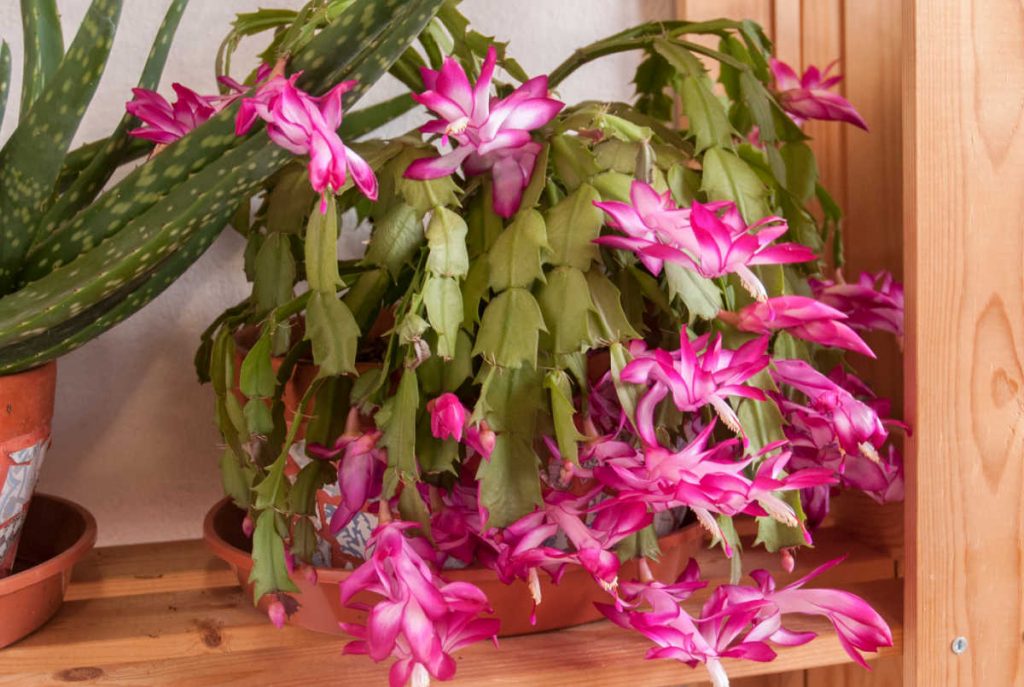
Light and Temperature Regulation
To encourage blooming, adjust the plant’s light exposure and temperature.
In early fall, place the cactus in a dark, cool room (around 50-55°F) for about 14 hours each night for six weeks.
This mimics the natural short daylight conditions of its native environment, stimulating flower bud formation.
Watering During Blooming
When buds appear, increase humidity and resume regular watering.
However, avoid overwatering, as too much moisture can cause buds to drop.
Maintain a consistent watering schedule to support blooming.
Pruning
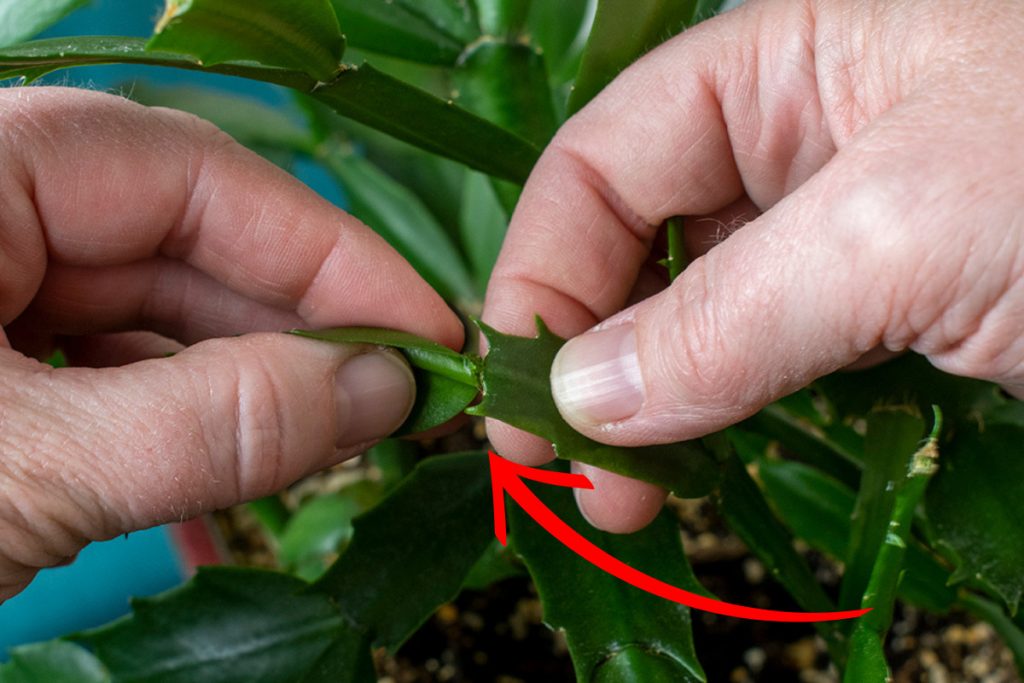
Prune the Christmas Cactus after it has finished blooming, typically in late winter or early spring.
Pruning helps control its size and encourages bushier growth.
Remove segments by twisting between the joints or using clean, sharp scissors.
The pruned segments can be used for propagation.
Repotting
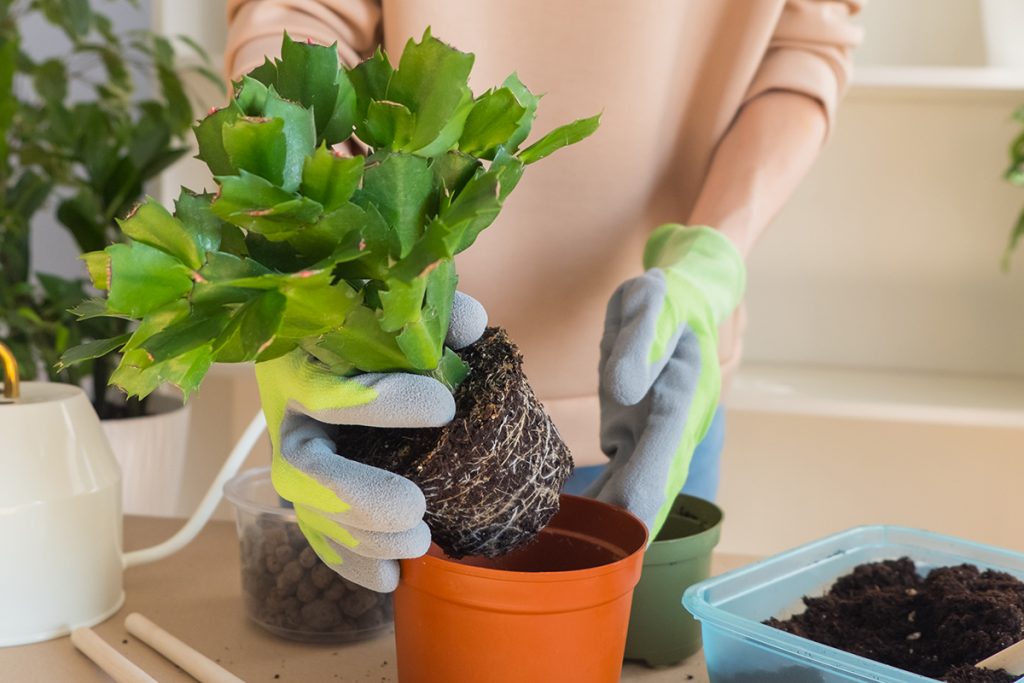
Repot the Christmas Cactus every two to three years to refresh the soil and accommodate growth.
The best time to repot is in late winter to early spring, after the blooming period.
Choose a slightly larger pot with good drainage and use fresh, well-draining soil.
Avoid pots that are too large, as the cactus blooms better when slightly root-bound.
Preventing and Managing Problems
Preventing and managing plant problems starts with vigilance and early detection. Regularly inspecting plants for signs of pests, disease, or stress is essential.
When problems do arise, removing affected plant parts and properly disposing of them can prevent further spread.
Bud Drop
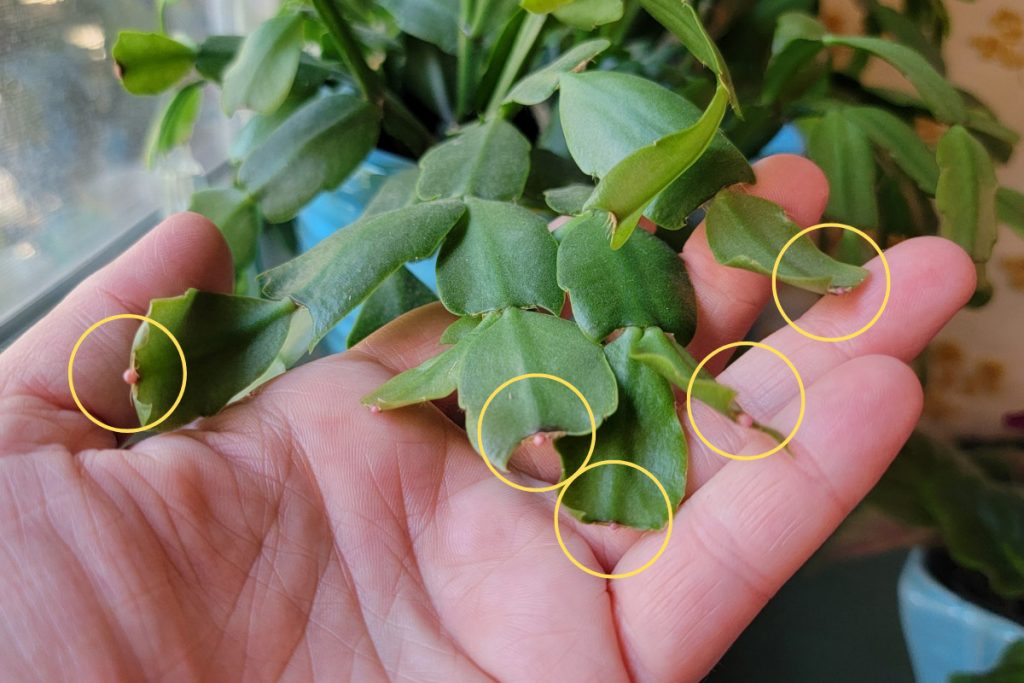
Bud drop is a common issue and can be triggered by several factors, including environmental changes, inconsistent watering, and insufficient light.
To prevent bud drop, maintain stable light, temperature, and humidity conditions.
Gradually acclimate the plant to any environmental changes, such as moving it from indoors to outdoors or vice versa.
Preventing Bud Drop: Ensure consistent watering without letting the soil dry out completely.
Keep the plant in a location with stable light and temperature conditions. Avoid moving the plant frequently, especially during the blooming period.
Root Rot
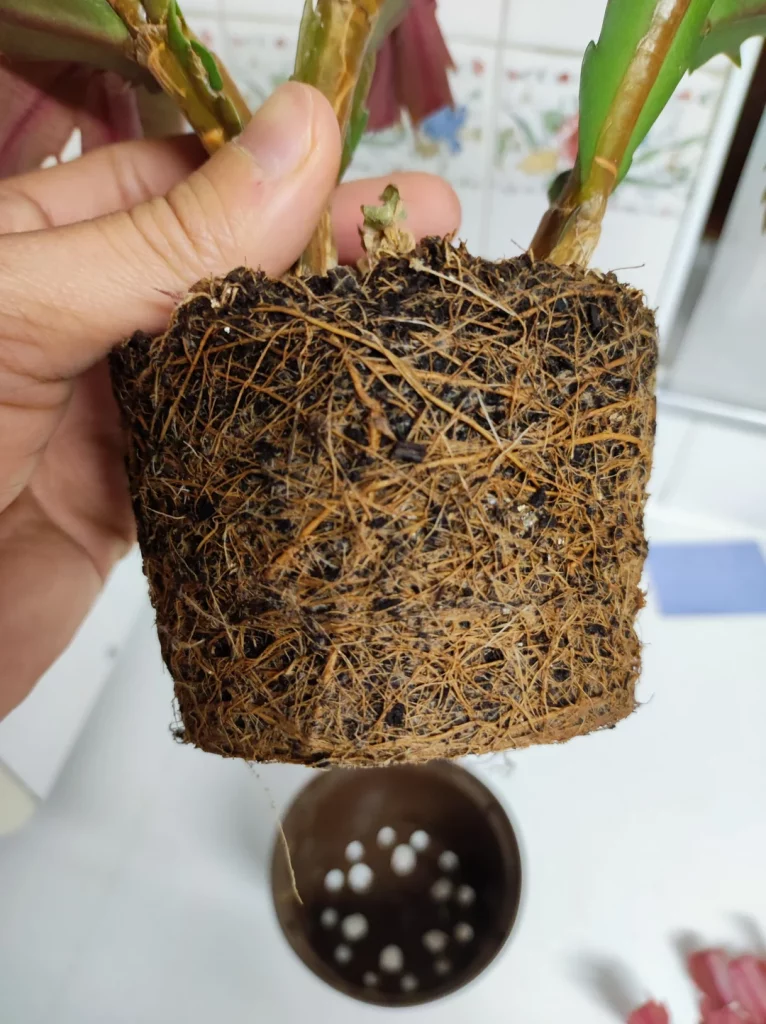
Root rot is a serious issue caused by overwatering and poor drainage. It leads to mushy roots and can eventually kill the plant.
To prevent root rot, always use well-draining soil and pots with drainage holes. Allow the soil to dry out between waterings, and avoid letting the plant sit in water.
Identifying Root Rot: Symptoms include yellowing leaves, wilting despite moist soil, and a foul odor from the soil.
If root rot is suspected, remove the plant from its pot, trim away the affected roots, and repot it in fresh, well-draining soil.
Treating Root Rot: If root rot is detected early, trim off the affected roots and repot the plant in fresh soil.
Reduce watering frequency and ensure the pot has adequate drainage.
Pest Infestation
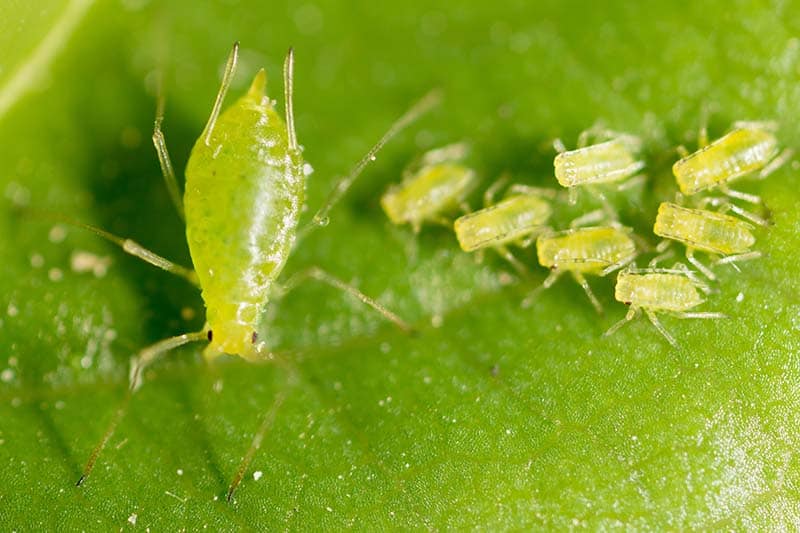
Christmas Cacti can be affected by pests such as mealybugs, spider mites, and aphids.
These pests can cause damage by sucking the plant’s sap, leading to weak growth and leaf drop.
To manage pest infestations, regularly inspect the plant for signs of pests, such as white cottony masses (mealybugs) or webbing (spider mites).
Treating Pests: Use insecticidal soap or neem oil to treat infestations. Isolate the affected plant to prevent the pests from spreading to other plants.
Ensure good plant hygiene by removing dead leaves and debris.
Color Changes
Color changes in plants can be indicative of various underlying issues or natural processes.
By understanding the causes behind color changes, you can take appropriate action to support your plants’ health and vitality.
Red Leaves
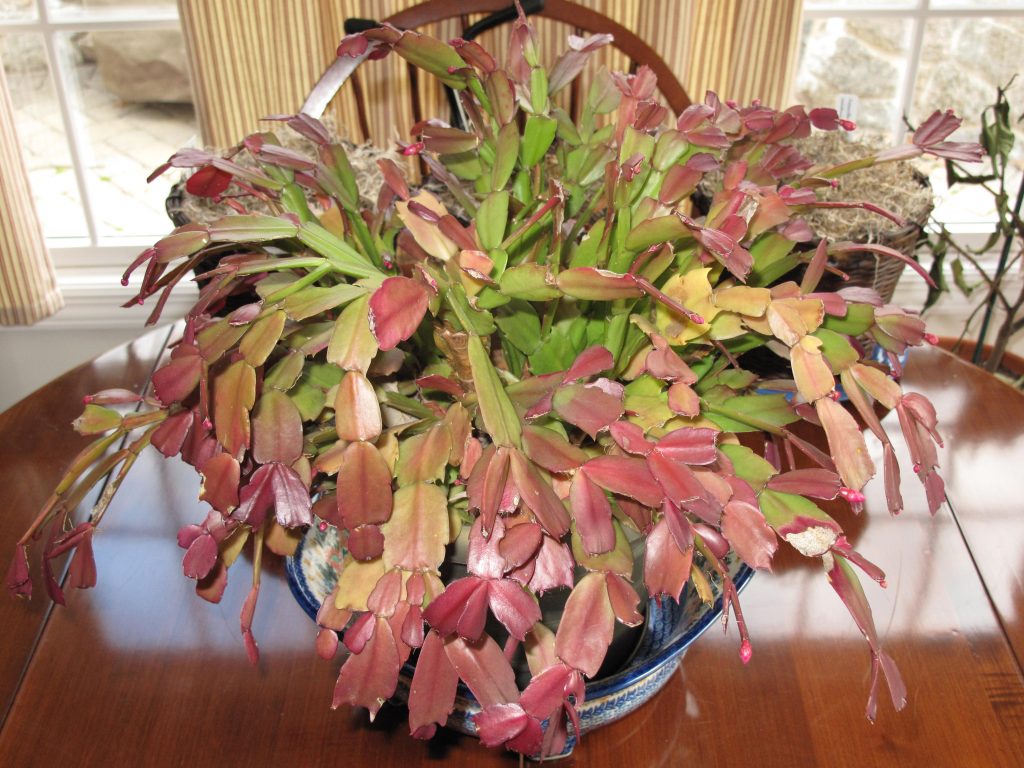
Red leaves on a Christmas Cactus typically indicate stress, often caused by too much direct sunlight or insufficient watering.
Excessive light exposure can lead to sunburn, causing the leaves to turn red. Similarly, lack of water can stress the plant, resulting in red leaves.
Preventing Red Leaves: Adjust the plant’s location to ensure it receives bright, indirect light.
Avoid placing it in direct sunlight for extended periods.
Monitor soil moisture regularly and water the plant appropriately to maintain its health.
Treating Red Leaves: If the leaves have turned red due to excessive sunlight, move the plant to a shadier spot with indirect light. I
f underwatering is the cause, increase watering frequency while ensuring proper drainage to avoid waterlogging.
Yellowing Leaves
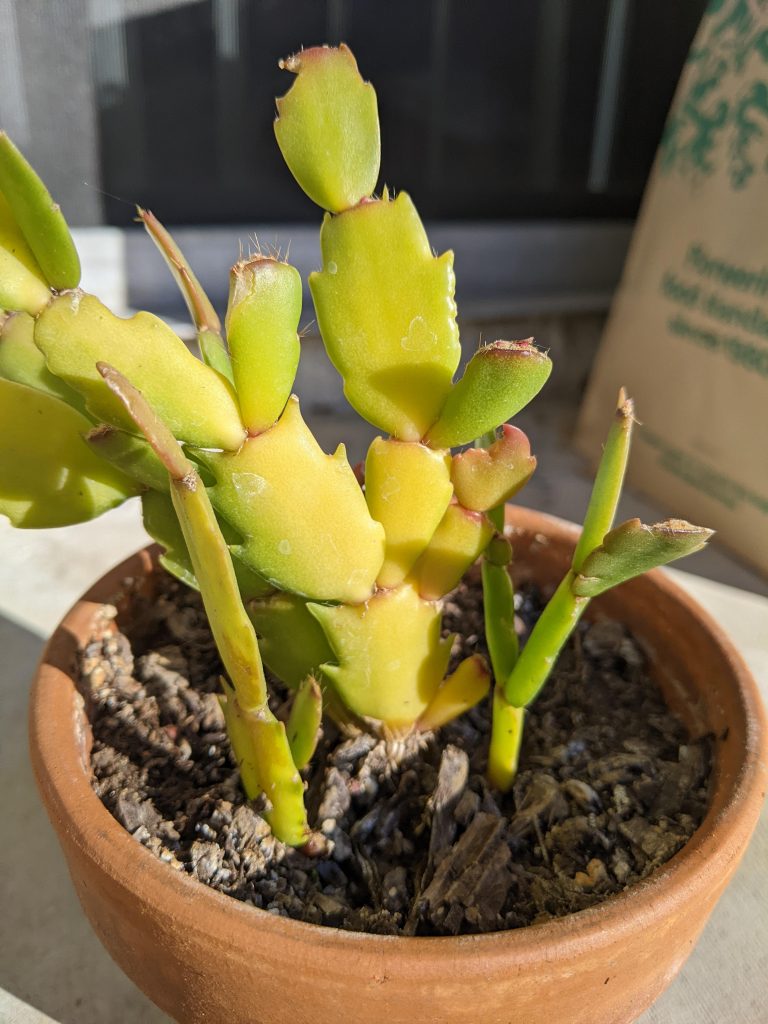
Yellow leaves can signal several issues, including overwatering, underwatering, or nutrient deficiencies.
Evaluate your watering practices and check the soil for proper drainage. Adjust your watering schedule accordingly, and consider fertilizing if the plant shows signs of nutrient deficiency.
Preventing Yellowing Leaves: Ensure a balanced watering routine, avoiding both overwatering and underwatering.
Use a balanced fertilizer during the growing season to provide essential nutrients. Monitor the plant for signs of nutrient deficiencies and adjust fertilization accordingly.
Treating Yellowing Leaves: If yellowing is due to overwatering, allow the soil to dry out more between watering’s. If underwatering is the issue, increase watering frequency.
For nutrient deficiencies, use a balanced fertilizer and ensure the soil pH is suitable for nutrient absorption.
Browning Tips
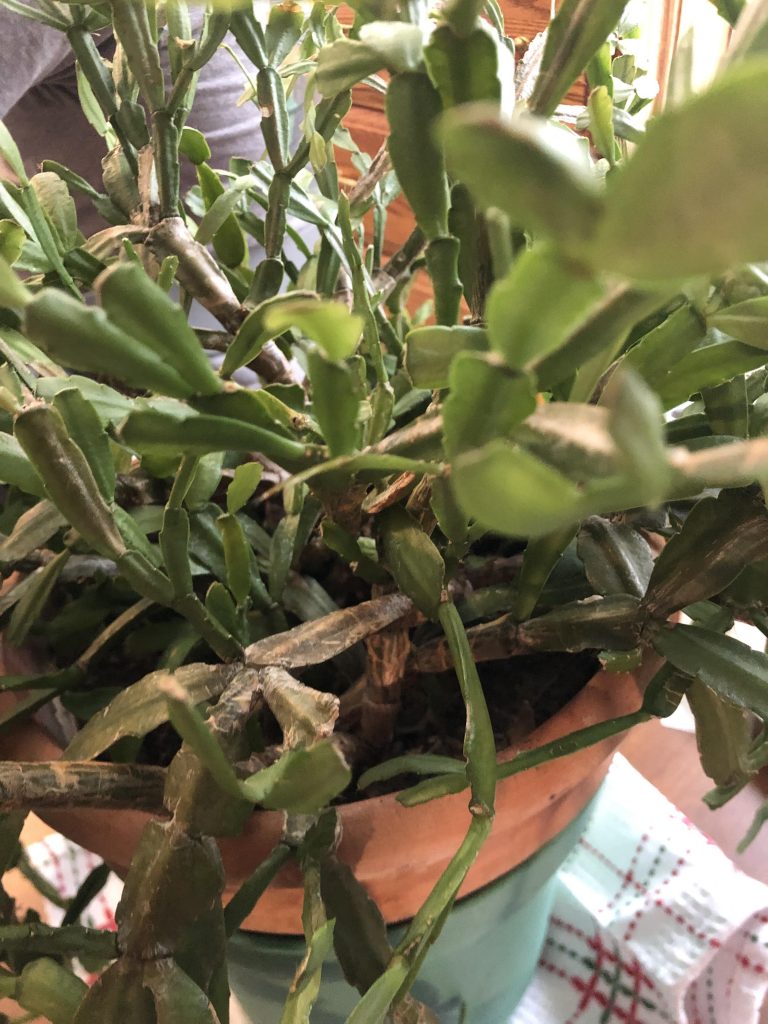
Browning leaf tips often indicate low humidity or inconsistent watering. Increase humidity around the plant using a humidity tray or room humidifier.
Ensure consistent watering practices, avoiding periods of complete dryness or excessive moisture.
Preventing Browning Tips: Maintain a consistent watering schedule and ensure the plant is in a humid environment.
Avoid placing the plant near heating vents or drafts, which can cause the air to become too dry.
Treating Browning Tips: Trim off the brown tips with clean, sharp scissors to improve the plant’s appearance.
Adjust the humidity levels around the plant and ensure consistent watering to prevent further browning.
Final Tips

Temperature Regulation
Maintain the temperature between 65-75°F (18-24°C) for optimal growth.
Christmas Cacti do not tolerate extreme temperature fluctuations, so avoid placing them near drafts, heating vents, or open windows.
During the blooming period, cooler nighttime temperatures (around 55°F or 13°C) can help encourage bud formation.
Light Exposure
Place the Christmas Cactus in bright, indirect light. Too much direct sunlight can cause sunburn, while too little light can inhibit blooming.
During winter, ensure the plant receives enough light by placing it near a window or supplementing with a grow light if natural light is insufficient.
Humidity and Air Circulation
Christmas Cacti prefer moderate to high humidity levels.
Use a humidity tray, room humidifier, or mist the plant regularly to maintain adequate humidity.
Ensure good air circulation around the plant to prevent fungal diseases and pest infestations.
Fertilization Schedule
Use a balanced, water-soluble fertilizer (NPK 20-20-20) every two to four weeks during the growing season (spring to early fall).
Avoid fertilizing during the dormant period (late fall to winter) when the plant is not actively growing. Over-fertilization can lead to nutrient buildup and damage the plant.
Pruning and Propagation
Prune the Christmas Cactus after it has finished blooming to encourage bushier growth.
Use the pruned segments for propagation by allowing them to callous over for a day or two before planting in well-draining soil.
Keep the soil slightly moist and place the cuttings in indirect light until roots develop.
Monitoring and Maintenance
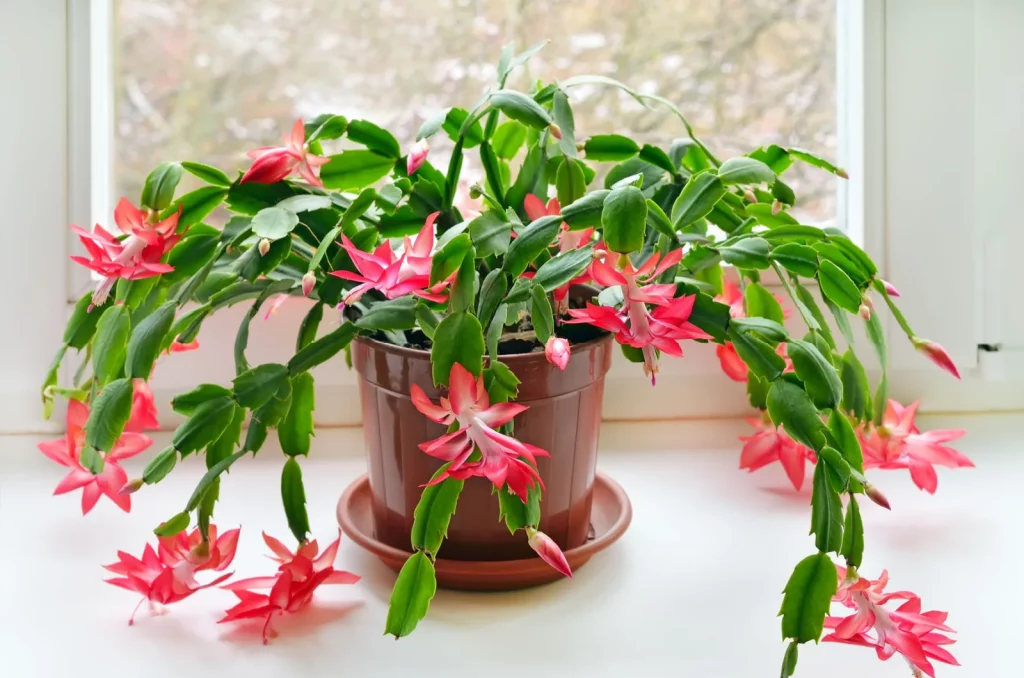
Regularly inspect the plant for signs of stress, pests, or disease.
Address any issues promptly to prevent further damage. Clean the leaves periodically to remove dust and allow the plant to breathe.
Providing consistent care and monitoring will help ensure your Christmas Cactus remains healthy and vibrant.
By following these guidelines, you can ensure your Christmas Cactus thrives and produces beautiful blooms during the holiday season.
Proper care involves balancing light, humidity, and watering, along with regular maintenance practices like pruning and repotting.
With the right conditions, your Christmas Cactus will be a vibrant addition to your home.

